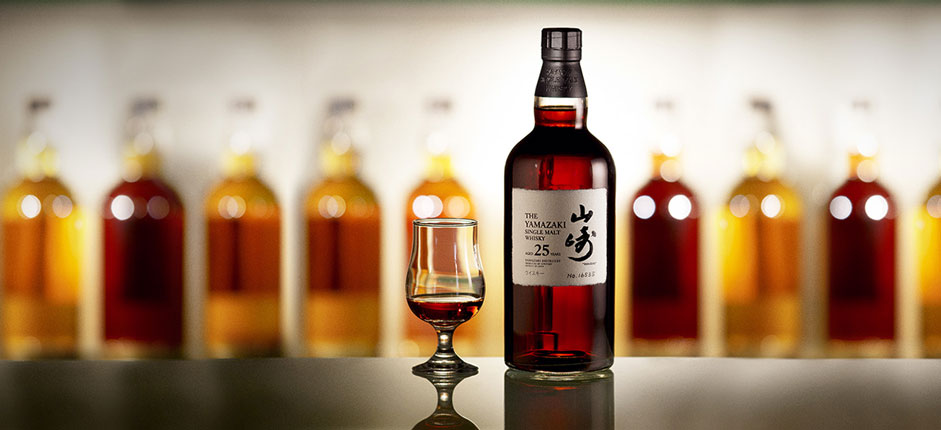
Whisky, much like fine wine, has become an established alternative investment class in the last ten years. It has seen significant, even explosive growth of 162% over the last four years, but many whisky and investment analysts observe that the market has only just begun to open up for top brands.
The most sought-after whiskies are primarily made in Scotland under very strict rules and Japan where rules tend to be more relaxed. There are around 125 functioning distilleries in Scotland as well as 40 “mothballed” distilleries which have either been shut down or completely dismantled. Whisky is also made in Ireland and USA, more recently in Taiwan, Finland, Australia and India.
Scotch whisky | A little background
Scotch whisky is the name given to all whiskies produced in Scotland under strict rules that govern the production: “Scotch Whisky must, by law, be distilled and matured in Scotland in oak casks for at least three years and bottled at a minimum alcoholic strength of 40% abv. The robust legal protection of Scotch – vital to safeguard a spirit globally renowned for its quality – has grown over time.” [1]. It’s a proudly British industry – 93% of Scotch whisky is sold abroad and it alone generates 25% of all British food and drink exports, employing 40,000 people.
The main focus of the fine whisky market are single Malts made in relatively small quantities in a batch process using a traditional copper pot. There are also Single Grain whiskies which are mixed with single malt whiskies but made on an industrial scale. The final type is blended Scotch whisky which is a mixture of grain and malt whiskies generally mass produced.

Single Malts and the Scottish Regions
Unsurprisingly Single Malt Scotch whisky is where the greatest investment potential lies. Scotland is divided into various areas where the distilleries all make whiskies with distinctive geographical characteristics. Much like fine wine, even within these regions there is a great range of styles to be discovered and enjoyed by new and experienced drinkers alike.
The largest region geographically is the Highlands which has a greater diversity of styles given the massive geographical area. As a result, there doesn’t tend to be an overall style as there is in other regions but they tend to be fuller-bodied and smoky. The top brands include Dalmore, Glenmorangie and Oban.
Speyside is the principal whisky-producing region. Within its boundaries lie some forty-six operating distilleries – over half the total number in Scotland – including many of the great names of the whisky world such as Macallan, Dalwhinnie, Glenlivet and Glenfiddich. It is geographically in the Highlands but tends to be sweeter and more elegant in style.
The Lowlands region is the second largest geographically however only boasts five distilleries. The top distilleries are Auchentoshan and Glenkinchie which both retain the traditional triple-distillation process and means characteristically these are the least-peaty examples.
Campbeltown once had 34 distilleries but is now home to only three. Most important of these is Springbank which has a huge following and is quite smoky as compared to the nearest distillery, Glen Scotia, which makes light and grassy whiskies with briny character from being next to the sea.
Islay is probably the most famous whisky region within Scotland although in terms of area it is the smallest region. It is known for its strong peaty single malts with big-hitting names including Ardbeg, Laphroaig and Bowmore and has a continuous history of distillation going back to the 13th century.
North of Islay are the Islands such as Arran, Orkney and Jura which offer a diverse selection of tastes and characteristics. There are very exciting whiskies from these small islands such as Talisker, Jura and Highland Park which are characteristically a cross between Islay and Highland.
Japan
Japan has no rules for the regulation of making whisky and is therefore a bit trickier to follow. In general it is very similar in style to Scotch whisky. Most whiskies produced are blended but each company runs a discrete operation, owning their distillery and brands outright.
There are nine active distilleries in Japan at the moment, spread across the country, but the most popular are Yamazaki and Hibiki, both owned by Suntory Group who also own Chateau Beychevelle and Chateau Lagrange in Bordeaux. Currently, the most sought-after brand from Japan is Karuizawa which was opened in 1955 and dismantled in 2006.

Investment potential
For the purposes of investment, the focus is primarily Single Malt whiskies from Scotland and Japan however there is building interest in Irish and Australian bottles.
There is not one single Scottish region that is the most “investable” for whisky. The regions work much like appellations in the world of wine, giving general characteristics to their whiskies. Which whiskies are the most sought-after has much more to do with the quality of distillation, the following of the brand and of course, like all great commodities, rarity.
Whisky is unique for having a broader international client base than most collectable assets. There are already established markets in India, United States, Russia and Europe. The market for both drinking and investment has ballooned over the last few years. Demand has been driven by both existing mature markets and the increasing demand in South America and Asia.
According to Rare Whisky 101 (the pre-eminent whisky market trend analyst), the market for whisky has risen 162% in the last four years. It really is a time to pay attention to this ever-moving trend. Some of the world’s largest “celebrity” collectors include Jeff Bezos of Amazon and Jack Ma of Alibaba fame.

The greatest demand is for many of the oldest distilled bottles, 40, 50, even 70 year old bottles which command the highest prices at auction. Although age does matter, if a distillery has been dismantled or demolished, the whiskies (such as Killyloch, Glenury Royal or Karuizawa) will get the most impressive prices from auction or broking sale.
Age is however not a guarantee of quality. Rarity and overall demand are far more important factors – classic supply and demand. Limited-release and single-barrel whisky releases are highly sought after. A single-cask release will mean there are usually around 200-300 bottles per cask. Whisky does not improve or change much at all after bottling, allowing it to be a very steady physical asset able to withstand variable temperatures and heat.
Certain special releases will quickly become quite valuable. “The furore surrounding the Macallan Genesis release last August was also well-documented, with hundreds of potential buyers lining up outside the distillery trying to get hold of one of 360 bottles. (Macallan Genesis sold at the distillery that day for £495 but has since been seen at auction for over £4,000).” [2] This does mean that for some releases there exists a real urgency to claim a bottle or two. However, much like wine, whisky is a slow-brewing investment which ideally would take 5-10 years to come to fruition.
Investment practicalities
While wine tends to be sold in cases of 6x75cl or 12x75cl, whisky is sold by individual bottle or casks which are then bottled within two to twenty years of purchase. Current market prices of top whiskies go from £200 a bottle up to £2 million a cask.
Like wine buying for investment, provenance is important to guarantee impeccably sourced stocks. Almost all whisky is bought and sold duty-paid for investment, a significant divergence from wine investment. Our whisky sourcing is either direct from the distillery or from trusted fine whisky traders. The professional storage of whisky is also essential to maintain condition and value. Private Reserves storage is ideal to ensuring the intrinsic value of the whiskies is preserved.
Selling whisky, like selling wine can be done through brokerage, outright sale or auction depending on the rarity and demand of the whisky you have. Goedhuis are here to advise on the best possible route to maximising any potential returns on your whisky.
Case studies
Brora
Brora is one of the many “mothballed” distilleries. Production ceased in 1983 and their remaining casks are currently sold as extremely limited releases. One of the oldest distilleries, it was opened in 1819 and was called Clynelish until the actual Clynelish opened down the road 150 years later. The 2014 release of the 40 year old was the single most expensive bottle Diageo had released to date and since then demand has surged for this Highland whisky.

The RWB (Rare Whisky Brora) Index includes official releases up to and including 2012.
Yamazaki
Yamazaki was the first whisky distillery set up in Japan in 1923 near Kyoto. It was set up by Shinjiro Torii, the founder of Suntory (one of largest drinks companies in the world). The international appeal of these whiskies has grown significantly over the last few years, winning international awards and plaudits for their age-statement releases.

The Yamazaki Rare Whisky Index tracks the performance of 30 collectable bottles from this hugely desirable Japanese brand.
The Macallan
The Macallan has been a leading brand of top-selling single-malt whiskies in the world. Macallan was one of the first distilleries to do organised special releases, high-profile auction sales and collaborations with other high-profile brands such as Lalique crystal. The Macallan Lalique decanter releases are highly sought-after and command prices in the tens of thousands.

Macallan M18 Index
The Rare Whisky M18 Index charts the performance of a collection of bottles which have almost attained cult collectors status. Many of the older vintages retailed for a fraction of their current value and demand has never been so high. The index covers all vintages from, and including, the exceptionally rare 1965 up to and including the 1990 vintage.
Macallan M25 Index
In common with the RWM18 index, the Rare Whisky M25 Index tracks the performance of the coveted Macallan Anniversary Malts by vintage. The final bottle to carry a vintage was the 1975. All released vintages are captured in the index from the very first 1957 release.
[1] – Scotch Whisky Association
[2] The Financial Times.

 Written By
Written By